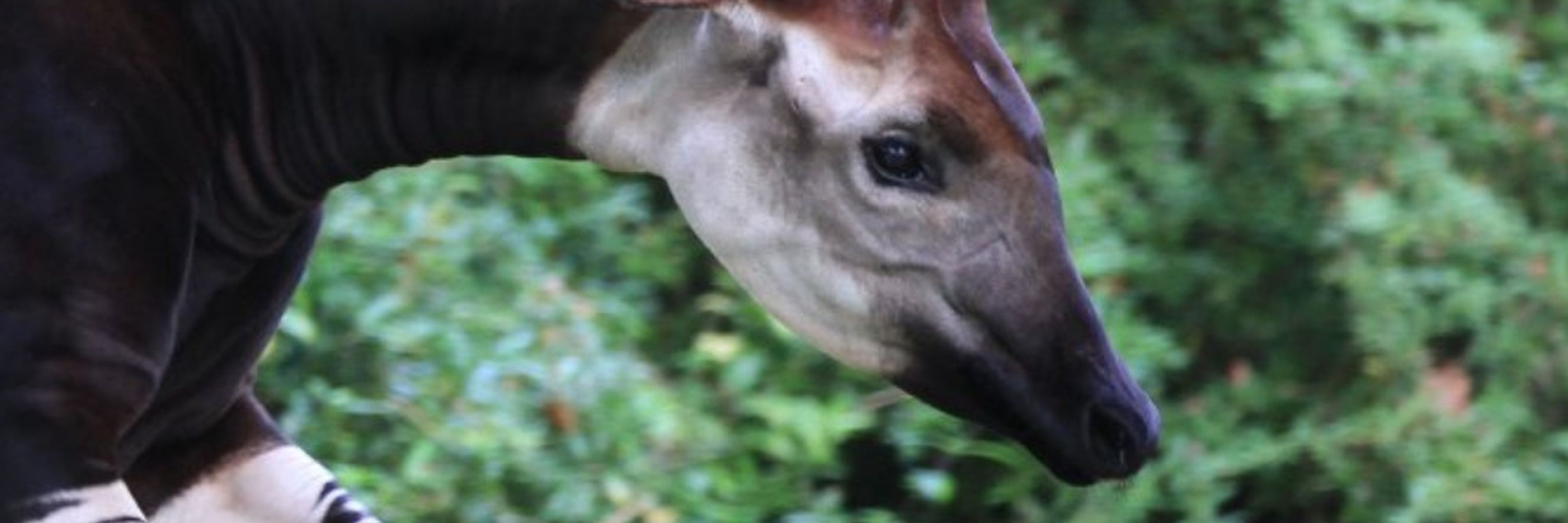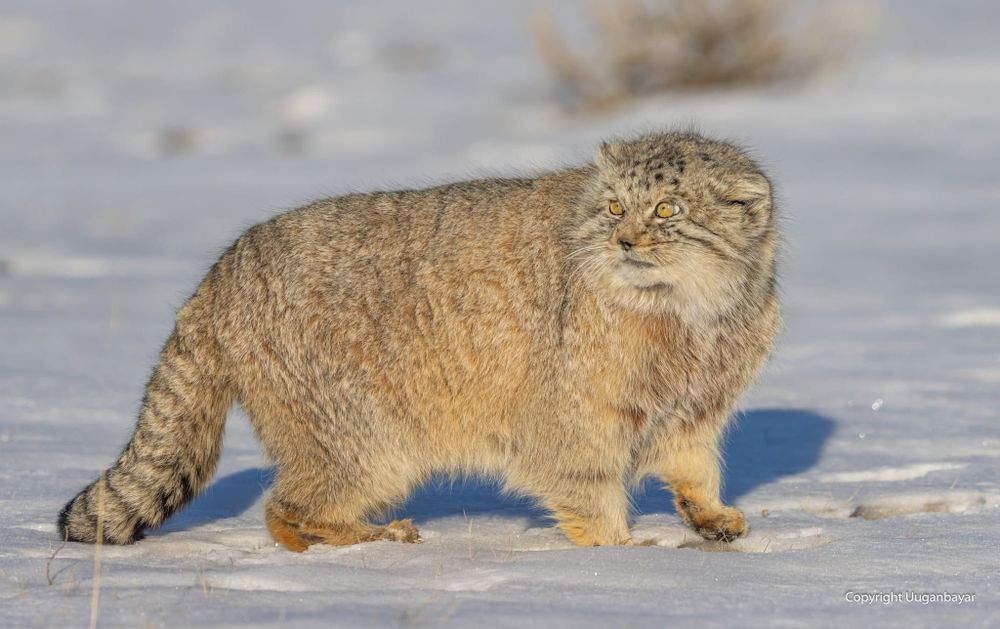
https://www.mammalian-biology.de
Host of Mammalian Biology https://link.springer.com/journal/42991
A highly specialized mammal adapted to life in the Arctic and optimized for long-distance travel, efficient thermoregulation, and reliance on energy-dense marine prey.
🧪 🦊 🦤 🌍
Photos: ©mickeydylan, peterkennerley


A highly specialized mammal adapted to life in the Arctic and optimized for long-distance travel, efficient thermoregulation, and reliance on energy-dense marine prey.
🧪 🦊 🦤 🌍
Photos: ©mickeydylan, peterkennerley
Endemic to montane rainforests of Papua New Guinea, it is one of the largest members of the genus Dendrolagus, a group of arboreal macropods.
🧪 🦊 🦤 🌍
Photos: © Alex Slavenko, CC-BY-SA 4.0, © Daniel, CC-BY-NC, iNaturalist


Endemic to montane rainforests of Papua New Guinea, it is one of the largest members of the genus Dendrolagus, a group of arboreal macropods.
🧪 🦊 🦤 🌍
Photos: © Alex Slavenko, CC-BY-SA 4.0, © Daniel, CC-BY-NC, iNaturalist
Native to North America, this agile, nocturnal member of the raccoon family (Procyonidae) is one of the Southwest’s most elusive residents.
Photos: © rmyoshihara, © a-geoman, © Isabel Herrera, CC-BY-NC 4.0, iNaturalist



Native to North America, this agile, nocturnal member of the raccoon family (Procyonidae) is one of the Southwest’s most elusive residents.
Photos: © rmyoshihara, © a-geoman, © Isabel Herrera, CC-BY-NC 4.0, iNaturalist
3/3 This finding reveals hidden biodiversity in one of the world’s
most threatened ecosystems, the Cerrado, and emphasizes the urgency of
conservation. Protecting this biome means safeguarding countless
undiscovered species and the ecological services they provide to
people and nature.

3/3 This finding reveals hidden biodiversity in one of the world’s
most threatened ecosystems, the Cerrado, and emphasizes the urgency of
conservation. Protecting this biome means safeguarding countless
undiscovered species and the ecological services they provide to
people and nature.
🧪 🦊 🦤 🌍
Meet the European ground squirrel (Spermophilus citellus)!
Also called the souslik, this little rodent calls the grasslands of Central & SE Europe home. 🌱
Photos: ©Frank Zachos


🧪 🦊 🦤 🌍
Meet the European ground squirrel (Spermophilus citellus)!
Also called the souslik, this little rodent calls the grasslands of Central & SE Europe home. 🌱
Photos: ©Frank Zachos
Native to the high-altitude rainforests of northeastern Madagascar, the Silky Sifaka is one of the rarest and most enigmatic lemurs alive today.
🧪 🦤 🦊 🌍
Photos: © pfaucher ,© Sunny Fleming, CC-BY-NC 4.0, iNaturalist


Native to the high-altitude rainforests of northeastern Madagascar, the Silky Sifaka is one of the rarest and most enigmatic lemurs alive today.
🧪 🦤 🦊 🌍
Photos: © pfaucher ,© Sunny Fleming, CC-BY-NC 4.0, iNaturalist
Unlike its tiny pet-store cousins, this wild hamster can reach up to 30 cm long, with a bold coat of chestnut, black, and white patches that makes it truly stand out.
🧪 🦊 🦤 🌍
Photos: ©Frank Zachos


Unlike its tiny pet-store cousins, this wild hamster can reach up to 30 cm long, with a bold coat of chestnut, black, and white patches that makes it truly stand out.
🧪 🦊 🦤 🌍
Photos: ©Frank Zachos
@ermlinproject.bsky.social


@ermlinproject.bsky.social
Mountain mice respond differently to climate change: the high-altitude Juliomys ossitenuis loses more habitat than the widespread Juliomys pictipes as temperatures increase. Both species are endemic to the Atlantic Forest, a biodiversity hotspot particularly susceptible to climate change.


Mountain mice respond differently to climate change: the high-altitude Juliomys ossitenuis loses more habitat than the widespread Juliomys pictipes as temperatures increase. Both species are endemic to the Atlantic Forest, a biodiversity hotspot particularly susceptible to climate change.
We had inspiring talks, shared knowledge, sparked discussions, and strengthend the amazing community of mammalogists.
A big thanks goes out to the coordination team and the Italian Mammal Society- Associazione Teriologica Italiana!

We had inspiring talks, shared knowledge, sparked discussions, and strengthend the amazing community of mammalogists.
A big thanks goes out to the coordination team and the Italian Mammal Society- Associazione Teriologica Italiana!
Native to Southeast Asia, it is a solitary, nocturnal carnivoran distributed from the Malay Peninsula to Borneo and the Philippines and some island systems, including Sulawesi.
Photos: © Martin Walsh, © matthewkwan, CC-BY-ND 4.0, iNaturalist


Native to Southeast Asia, it is a solitary, nocturnal carnivoran distributed from the Malay Peninsula to Borneo and the Philippines and some island systems, including Sulawesi.
Photos: © Martin Walsh, © matthewkwan, CC-BY-ND 4.0, iNaturalist

The Vaquita is with an estimated population of fewer than 10 individuals, the most endangered marine mammal known to science.
🧪 🦤 🦊 🌍
Photos: © Alfokrads, © chris huh, CC-BY-SA, iNaturalist, Wikipedia


The Vaquita is with an estimated population of fewer than 10 individuals, the most endangered marine mammal known to science.
🧪 🦤 🦊 🌍
Photos: © Alfokrads, © chris huh, CC-BY-SA, iNaturalist, Wikipedia
🐆 #MammalMonday: Amur Leopard (Panthera pardus orientalis)
A critically endangered leopard subspecies, fewer than 120 remain in the wild. One of the most endangered felids on Earth.
🧪 🦤 🦊 🌍
Photos: © Royle Safaris © krunku, CC-BY-NC 4.0, iNaturalist



🐆 #MammalMonday: Amur Leopard (Panthera pardus orientalis)
A critically endangered leopard subspecies, fewer than 120 remain in the wild. One of the most endangered felids on Earth.
🧪 🦤 🦊 🌍
Photos: © Royle Safaris © krunku, CC-BY-NC 4.0, iNaturalist

The wolverine is the largest terrestrial member of the Mustelidae family—and arguably the toughest.
🧪 🦤 🦊 🌍
Photos: © Royle Safaris, © Manuel Ruedi , CC-BY-NC 4.0, iNaturalist


The wolverine is the largest terrestrial member of the Mustelidae family—and arguably the toughest.
🧪 🦤 🦊 🌍
Photos: © Royle Safaris, © Manuel Ruedi , CC-BY-NC 4.0, iNaturalist
Small, swift, and often overlooked — meet the Banana Serotine, one of Africa’s tiniest bats!
🧪 🦤 🦊 🌍
Photos: © Rod Cassidy, © Piotr Naskrecki , CC-BY-NC 4.0, iNaturalist


Small, swift, and often overlooked — meet the Banana Serotine, one of Africa’s tiniest bats!
🧪 🦤 🦊 🌍
Photos: © Rod Cassidy, © Piotr Naskrecki , CC-BY-NC 4.0, iNaturalist
The short-beaked echidna is one of the few extant species of monotremes — a rare group of egg-laying mammals endemic to Australia and parts of New Guinea.
🧪 🦤 🦊 🌍
Photo: © thammbamm, CC-BY-NC 4.0, iNaturalist

The short-beaked echidna is one of the few extant species of monotremes — a rare group of egg-laying mammals endemic to Australia and parts of New Guinea.
🧪 🦤 🦊 🌍
Photo: © thammbamm, CC-BY-NC 4.0, iNaturalist
Meet the largest land mammal on Earth – the magnificent African elephant! Found in diverse habitats from savannas to forests, these gentle giants play a vital role in maintaining the ecosystems they roam. 🌍 🧪 🦊 🦤


Meet the largest land mammal on Earth – the magnificent African elephant! Found in diverse habitats from savannas to forests, these gentle giants play a vital role in maintaining the ecosystems they roam. 🌍 🧪 🦊 🦤


Say hello to Crocuta crocuta, better known as the spotted hyena — one of Africa’s most misunderstood and fascinating predators!
Photo: © Jonathan Walz, CC-BY-NC 4.0, www.inaturalist.org/observations...

Say hello to Crocuta crocuta, better known as the spotted hyena — one of Africa’s most misunderstood and fascinating predators!
Photo: © Jonathan Walz, CC-BY-NC 4.0, www.inaturalist.org/observations...
protect threatened species like the Pallas’s cat.
Mongolia holds the largest population, underscoring its
critical role in persistence. This study highlights key
habitats for #conservation efforts of this elusive,
majestic felid.

protect threatened species like the Pallas’s cat.
Mongolia holds the largest population, underscoring its
critical role in persistence. This study highlights key
habitats for #conservation efforts of this elusive,
majestic felid.
The Black-tailed Jackrabbit, Lepus californicus, is a large-bodied hare native to the arid and semi-arid regions of western North America.
Photos: © Pedro B. Dávila Valdés, © searching4critters; CC-BY-NC, iNaturalist


The Black-tailed Jackrabbit, Lepus californicus, is a large-bodied hare native to the arid and semi-arid regions of western North America.
Photos: © Pedro B. Dávila Valdés, © searching4critters; CC-BY-NC, iNaturalist
The fossa (Cryptoprocta ferox) is a remarkable
carnivorous mammal native to Madagascar, known for
its feline-like appearance and agile, muscular build.
Photos: © Jose G. Martinez-Fonseca, CC-BY-NC ( (creativecommons.org/licenses/by-...), iNaturalist

The fossa (Cryptoprocta ferox) is a remarkable
carnivorous mammal native to Madagascar, known for
its feline-like appearance and agile, muscular build.
Photos: © Jose G. Martinez-Fonseca, CC-BY-NC ( (creativecommons.org/licenses/by-...), iNaturalist
Ever heard about the Northern Elephant Seal (Mirounga angustirostris)?
Adult males can weigh over 2,000 kg and hold their breath for up to 2 hours!
photo: © Justin Hofman, iNaturalist, CC BY-NC 4.0 (creativecommons.org/licenses/by-... )

Ever heard about the Northern Elephant Seal (Mirounga angustirostris)?
Adult males can weigh over 2,000 kg and hold their breath for up to 2 hours!
photo: © Justin Hofman, iNaturalist, CC BY-NC 4.0 (creativecommons.org/licenses/by-... )

